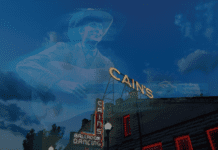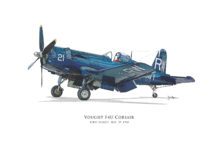For about a decade, from the mid-1950s until the mid- to late ‘60s, every town of any size had at least one. Most cities had more. Tulsa and Oklahoma City, for instance, each boasted a pair, competing hard for the burgeoning baby boomer teen market.
I’m talking about Top 40 radio stations, providers of the crazy kaleidoscopic soundtrack that swirled behind the adolescent lives of a half-century ago. Blaring the popular music of the day from cruising cars or tinny transistorized speakers, served up by fast-talking local heroes of the airwaves, these outlets connected teens and their culture in a brand-new powerful way.
To get an idea of how it all worked – or remember it all again – check out the current exhibit on radio station KAKC at the Tulsa Historical Society. While technically not a Top 40 station – its weekly printed playlists featured 50 songs instead of the more usual 40 – it was a great example of Top 40 radio, as was its crosstown rival, KELI. In Oklahoma City, a similar situation existed between WKY and KOMA.
KAKC and latecomer KELI vied for listenership with competitive giveaways and contests, radio-station sponsored sock hops and other teen-oriented events, and disc jockeys with machine-gun deliveries who could connect with the kids in what was almost a secret language. The KAKC-KELI competition played out in every city across America, as each Top 40 outlet in every market strove to be the hippest, the grooviest, the hottest purveyor of happening-now music in the area.
The format had a good run, but it was eventually done in by a number of factors. For one thing, as the youngsters became young adults, many were swept away by, or at least attracted to, the hippie movement, and the fast-talking jocks and their wacky takes gave way to a format called, in many markets, “fresh air.” That approach featured laid-back voices that sounded as though they were under the influence of something extremely mellow, introducing spacey rock-album cuts instead of the pop-oriented singles designed to play out in a radio-friendly three minutes or less. (A length that allowed for lots of songs per hour.) Also, the fast-rising FM radio format made the fresh-air stations more viable, as they offered better music reproduction than those on the AM band.
While they lasted though, the Top 40 stations were remarkably democratic and eclectic, much the opposite of both satellite and over-the-air radio today. Now, anyone can access an astounding variety of stations catering to just about any taste, from country-music oldies to jazz to R&B to hard rock. It’s been called “narrowcasting” instead of broadcasting, and while it definitely has its advantages – a listener can home in on exactly the kind of music he or she wants to hear at any given time – it lacks the grab-bag approach of the Top 40s, when you might hear a Buck Owens country record next to a Beatles rock ‘n’ roll tune, followed by a Motown soul number and then something by Frank Sinatra. A listener never knew exactly what musical style was going to jump out of the speaker when the dial was turned, and that element of surprise was, as much as anything, what made Top 40 such a joyous thing.
The point here is that while the format has technically been gone for decades, it still comes around once a year – this time of year – when at least one station in each major market devotes itself to playing nothing but Christmas music for a month or so. Those outlets are the last place left to find that great old Top 40 spirit; last year, in the space of 15 minutes, I heard holiday songs by Bruce Springsteen (rock), Gene Autry (classic country), Britney Spears (dance-pop), and Dean Martin (classic pop) all back-to-back on a Tulsa station devoting itself to all-Christmas music.
So, if you’re a baby boomer, or someone not of that era who wonders what radio was like then, give a good listen to the egalitarian lineup offered on a limited-time basis by those stations – and keep an ear out for a few of my own favorites from a variety of genres.
Best Christmas Song with Oklahoma Ties: There’s no shortage of these, but of course the nod has to go to “Have Yourself A Merry Little Christmas,” co-written by Broken Arrow’s own Ralph Blane. You’re liable to hear just about any vocalist giving it a whirl – it’s one of the most-recorded seasonal songs ever – but it was originally penned for Judy Garland to sing to in the 1944 film Meet Me in St. Louis. In her fine biography of the songwriter (Ralph Blane, published by TCS in 2008), Phyllis Cole Braunlich noted that some of the original lyrics, by Blane’s songwriting partner Hugh Martin, were just too sad. “Have yourself a merry little Christmas/It may be our last/Next year, we will all be living in the past,” for instance, which indeed can induce depression.
Garland thought those words were “too much” and complained. “Blane told Martin he thought he could fix it,” wrote Braunlich, “and Hugh then said, ‘Be my guest.’” The result? A holiday classic.
Honorable mention goes to “Swingin’ Home for Christmas” by Steve Ripley. Originally pitched to fellow Oklahoman Roy Clark, it was instead recorded by Ripley’s group the Tractors at Tulsa’s Church Studio for the disc Have Yourself A Tractors Christmas (Arista, 1995). The spirited tune manages to celebrate not only the season, but also Oklahoma and western swing, one of the state’s greatest contributions to popular music.
Saddest Christmas Song: This one has to be “The Little Boy That Santa Claus Forgot,” which originated with British songstress and actor Vera Lynn in the 1940s. We’re most likely to hear the Nat “King” Cole version these days. What makes it so sad is that you keep hoping for something good to happen to this poor kid, and at the end of the song it turns out he really is the little boy that Santa Claus forgot. Bummer.
Best Christmas Song That’s Not About Christmas: Although it debuted in the famous 1954 holiday movie White Christmas (and lost a best-song Oscar to “Three Coins in the Fountain”), Irving Berlin’s “Count Your Blessings (Instead of Sheep)” doesn’t contain lyric one about Christmas, or even winter. It’s a beautiful song with a laudable sentiment though, and the most popular version still seems to be by Rosemary Clooney, Bing Crosby’s White Christmas co-star.
And finally, Best Christmas Song You Won’t Hear: In 1984, country artist Loy Blanton recorded a straightforward but heart-wrenching number called “Christmas at the Jersey Lily Lounge” Released on the independent SoundWaves label, it inexplicably failed to make an impression nationally and faded away, as did Blanton’s career.
“That’s probably as good a song – not just a Christmas song – as I’ve ever heard,” says well-known Tulsa-based manager and booking agent Ray Bingham, who worked with Blanton during the ‘80s. “It’s just a great heart-wrenching song.”
The only other recording I can find of “Christmas at the Jersey Lily Lounge” is by country star Bobby Bare, who put it on his 1988 disc Merry Christmas from Bobby Bare.
I’ve never heard that version on any station, however, and the song remains a forgotten near-classic.
A sad situation – but still not as sad as “The Little Boy That Santa Clause Forgot."
























